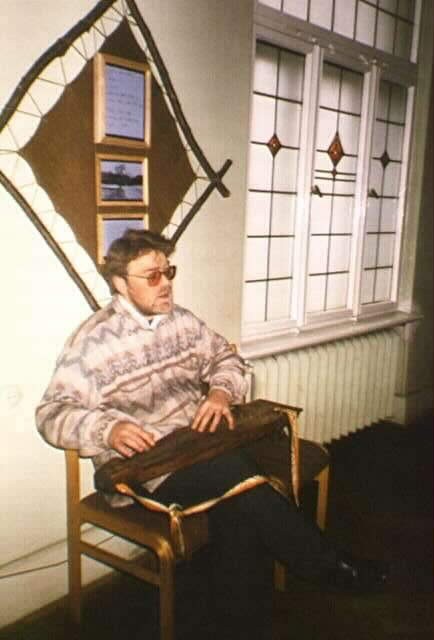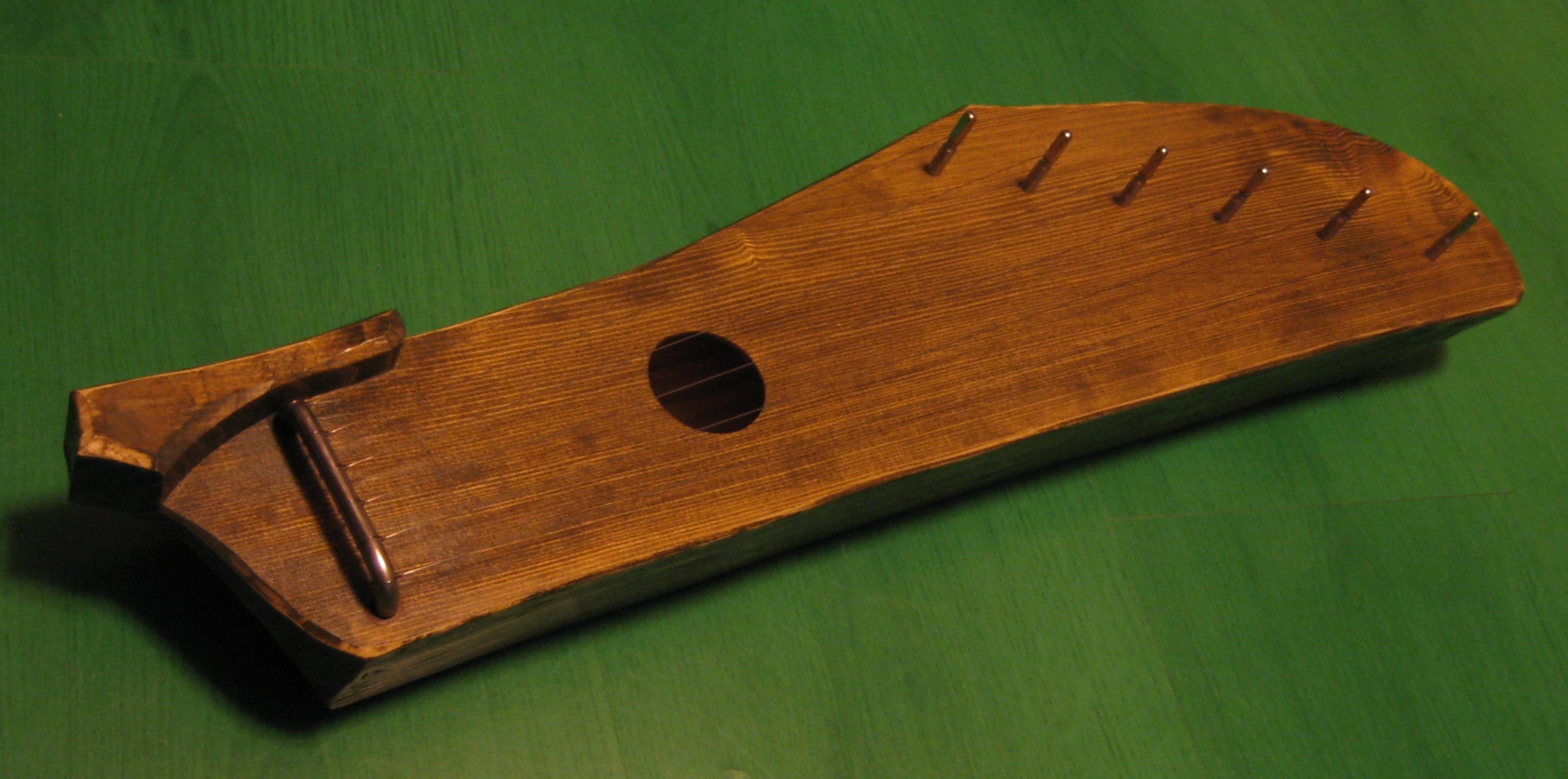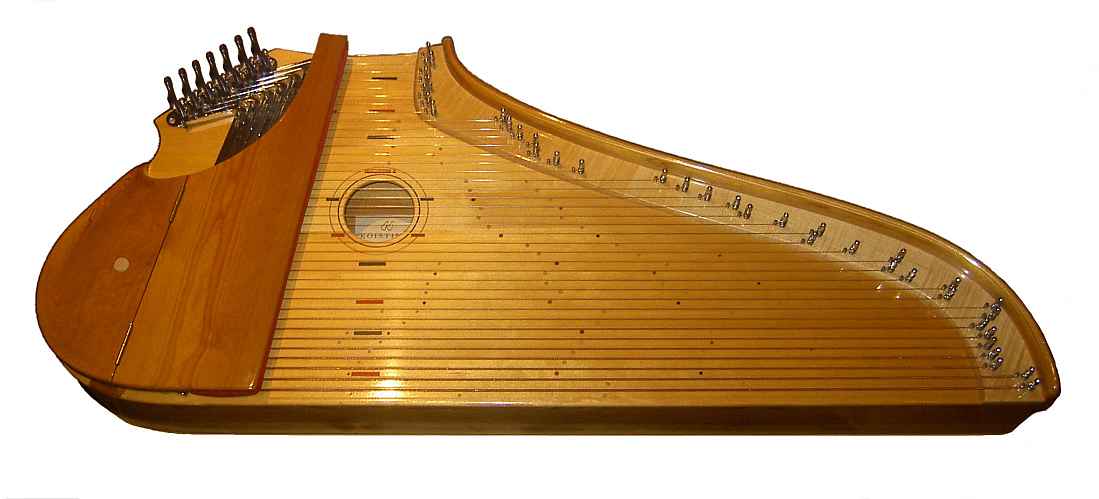|
Gusli
''Gusli'' ( rus, гусли, p=ˈɡuslʲɪ) is the oldest East Slavic multi-string plucked instrument, belonging to the zither family, due to its strings being parallel to its resonance board. Its roots lie in Veliky Novgorod in Novgorodian Rus'. It may have a connection to the Byzantine form of the Greek kithara, which in turn derived from the ancient lyre, or might have been imported from Western and Central Europe during the Middle Ages, when the zither had immense popularity. It has its relatives in Europe and throughout the world: kantele in Finland, kannel in Estonia, kanklės in Lithuania, kokles in Latvia, Zither in Germany, citera in the Czech Republic, psalterium in France and so on... Furthermore, the kanun has been found in Arabic countries, and the autoharp, in the United States. It is also related to such ancient instruments as Chinese gu zheng, which has a thousand-year history, and its Japanese relative koto. A stringed musical instrument called is listed as ... [...More Info...] [...Related Items...] OR: [Wikipedia] [Google] [Baidu] |
Kanklės
Kanklės () is a Lithuanians, Lithuanian plucked string instrument (chordophone) belonging to the Baltic region, Baltic box zither family known as the Baltic psaltery, along with the Latvian kokles, Estonian kannel (music), kannel, Finnish kantele, and Russian gusli. Etymology According to Finnish linguist Eino Nieminen, the name of the instrument, along with the names of most of its neighbouring counterparts (Latvian ''kokles'', Finnish ''kantele'', Estonian ''kannel'' and Livonian ''kāndla''), possibly comes from the proto-Baltic form ''*kantlīs''/''*kantlēs'', which originally meant 'the singing tree', most likely deriving from the Proto-Indo-European language, Proto-Indo-European root ''*qan-'' ('to sing, to sound'; cf. Latin "canto, cantus, canticum", Italian "cantare", French "chanter", English "chant, cantor"). A Lithuanian ethnologist Romualdas Apanavičius believes ''Kanklės'' could be derived from the Proto-European root ''*gan(dh)-'', meaning 'a vessel; a haft ... [...More Info...] [...Related Items...] OR: [Wikipedia] [Google] [Baidu] |
Kokles
Kokle (; ltg, kūkle) or historically kokles (''kūkles'') is a Latvian plucked string instrument (chordophone) belonging to the Baltic box zither family known as the Baltic psaltery along with Lithuanian kanklės, Estonian kannel, Finnish kantele, and Russian krylovidnye gusli. The first possible kokles related archaeological findings in the territory of modern Latvia are from the 13th century, while the first reliable written information about kokles playing comes from the beginning of the 17th century. The first known kokles tune was notated in 1891, but the first kokles recordings into gramophone records and movies were made in 1930s. Both kokles and kokles playing are included in the Latvian Culture Canon. Etymology According to Finnish linguist Eino Nieminen, the name of the instrument, along with the names of most of its neighbouring counterparts (Lithuanian ''kanklės'', Finnish ''kantele'', Estonian ''kannel'' and Livonian ''kāndla''), possibly comes from the p ... [...More Info...] [...Related Items...] OR: [Wikipedia] [Google] [Baidu] |
Kokles
Kokle (; ltg, kūkle) or historically kokles (''kūkles'') is a Latvian plucked string instrument (chordophone) belonging to the Baltic box zither family known as the Baltic psaltery along with Lithuanian kanklės, Estonian kannel, Finnish kantele, and Russian krylovidnye gusli. The first possible kokles related archaeological findings in the territory of modern Latvia are from the 13th century, while the first reliable written information about kokles playing comes from the beginning of the 17th century. The first known kokles tune was notated in 1891, but the first kokles recordings into gramophone records and movies were made in 1930s. Both kokles and kokles playing are included in the Latvian Culture Canon. Etymology According to Finnish linguist Eino Nieminen, the name of the instrument, along with the names of most of its neighbouring counterparts (Lithuanian ''kanklės'', Finnish ''kantele'', Estonian ''kannel'' and Livonian ''kāndla''), possibly comes from the p ... [...More Info...] [...Related Items...] OR: [Wikipedia] [Google] [Baidu] |
Kanklės
Kanklės () is a Lithuanians, Lithuanian plucked string instrument (chordophone) belonging to the Baltic region, Baltic box zither family known as the Baltic psaltery, along with the Latvian kokles, Estonian kannel (music), kannel, Finnish kantele, and Russian gusli. Etymology According to Finnish linguist Eino Nieminen, the name of the instrument, along with the names of most of its neighbouring counterparts (Latvian ''kokles'', Finnish ''kantele'', Estonian ''kannel'' and Livonian ''kāndla''), possibly comes from the proto-Baltic form ''*kantlīs''/''*kantlēs'', which originally meant 'the singing tree', most likely deriving from the Proto-Indo-European language, Proto-Indo-European root ''*qan-'' ('to sing, to sound'; cf. Latin "canto, cantus, canticum", Italian "cantare", French "chanter", English "chant, cantor"). A Lithuanian ethnologist Romualdas Apanavičius believes ''Kanklės'' could be derived from the Proto-European root ''*gan(dh)-'', meaning 'a vessel; a haft ... [...More Info...] [...Related Items...] OR: [Wikipedia] [Google] [Baidu] |
Kannel (instrument)
Kannel () is an Estonian plucked string instrument (chordophone) belonging to the Baltic box zither family known as the Baltic psaltery along with Finnish kantele, Latvian kokles, Lithuanian kanklės, and Russian gusli. The Estonian kannel has a variety of traditional tunings. In Estonia, studying the kannel has made a resurgence after some years of decline. (in Estonian) Etymology According to Finnish linguist Eino Nieminen, the name of the instrument, along with the names of most of its neighbouring counterparts (Finnish ''kantele'', L ...[...More Info...] [...Related Items...] OR: [Wikipedia] [Google] [Baidu] |
Kantele
A kantele () or kannel () is a traditional Finnish and Karelian plucked string instrument (chordophone) belonging to the south east Baltic box zither family known as the Baltic psaltery along with Estonian kannel, Latvian kokles, Lithuanian kanklės and Russian gusli. Construction Small kantele Modern instruments with 15 or fewer strings are generally more closely modeled on traditional shapes, and form a category of instrument known as small kantele, in contrast to the modern concert kantele. The oldest forms of kantele have five or six horsehair strings and a wooden body carved from one piece; more modern instruments have metal strings and often a body made from several pieces. The traditional kantele has neither bridge nor nut, the strings run directly from the tuning pegs to a metal bar (''varras'') set into wooden brackets (''ponsi''). Though not acoustically efficient, this construction is part of the distinctive sound of the instrument. The most typical and tradi ... [...More Info...] [...Related Items...] OR: [Wikipedia] [Google] [Baidu] |
Kantele
A kantele () or kannel () is a traditional Finnish and Karelian plucked string instrument (chordophone) belonging to the south east Baltic box zither family known as the Baltic psaltery along with Estonian kannel, Latvian kokles, Lithuanian kanklės and Russian gusli. Construction Small kantele Modern instruments with 15 or fewer strings are generally more closely modeled on traditional shapes, and form a category of instrument known as small kantele, in contrast to the modern concert kantele. The oldest forms of kantele have five or six horsehair strings and a wooden body carved from one piece; more modern instruments have metal strings and often a body made from several pieces. The traditional kantele has neither bridge nor nut, the strings run directly from the tuning pegs to a metal bar (''varras'') set into wooden brackets (''ponsi''). Though not acoustically efficient, this construction is part of the distinctive sound of the instrument. The most typical and tradi ... [...More Info...] [...Related Items...] OR: [Wikipedia] [Google] [Baidu] |
Zither
Zithers (; , from the Greek word ''cithara'') are a class of stringed instruments. Historically, the name has been applied to any instrument of the psaltery family, or to an instrument consisting of many strings stretched across a thin, flat body. This article describes the latter variety. Zithers are typically played by strumming or plucking the strings with the fingers or a plectrum. In the Hornbostel–Sachs classification system, the term refers to a larger family of similarly shaped instruments that also includes the hammered dulcimer family and piano and a few rare bowed instruments like the bowed psaltery, bowed dulcimer, and streichmelodion. Like an acoustic guitar or lute, a zither's body serves as a resonating chamber (sound box), but, unlike guitars and lutes, a zither lacks a distinctly separate neck assembly. The number of strings varies, from one to more than fifty. In modern common usage the term "zither" refers to three specific instruments: the concert zithe ... [...More Info...] [...Related Items...] OR: [Wikipedia] [Google] [Baidu] |
Zither
Zithers (; , from the Greek word ''cithara'') are a class of stringed instruments. Historically, the name has been applied to any instrument of the psaltery family, or to an instrument consisting of many strings stretched across a thin, flat body. This article describes the latter variety. Zithers are typically played by strumming or plucking the strings with the fingers or a plectrum. In the Hornbostel–Sachs classification system, the term refers to a larger family of similarly shaped instruments that also includes the hammered dulcimer family and piano and a few rare bowed instruments like the bowed psaltery, bowed dulcimer, and streichmelodion. Like an acoustic guitar or lute, a zither's body serves as a resonating chamber (sound box), but, unlike guitars and lutes, a zither lacks a distinctly separate neck assembly. The number of strings varies, from one to more than fifty. In modern common usage the term "zither" refers to three specific instruments: the concert zithe ... [...More Info...] [...Related Items...] OR: [Wikipedia] [Google] [Baidu] |
Simple Chordophone
String instruments, stringed instruments, or chordophones are musical instruments that produce sound from vibrating strings when a performer plays or sounds the strings in some manner. Musicians play some string instruments by plucking the strings with their fingers or a plectrum—and others by hitting the strings with a light wooden hammer or by rubbing the strings with a bow. In some keyboard instruments, such as the harpsichord, the musician presses a key that plucks the string. Other musical instruments generate sound by striking the string. With bowed instruments, the player pulls a rosined horsehair bow across the strings, causing them to vibrate. With a hurdy-gurdy, the musician cranks a wheel whose rosined edge touches the strings. Bowed instruments include the string section instruments of the orchestra in Western classical music (violin, viola, cello and double bass) and a number of other instruments (e.g., viols and gambas used in early music from the Baroque m ... [...More Info...] [...Related Items...] OR: [Wikipedia] [Google] [Baidu] |
Kievan Rus'
Kievan Rusʹ, also known as Kyivan Rusʹ ( orv, , Rusĭ, or , , ; Old Norse: ''Garðaríki''), was a state in Eastern and Northern Europe from the late 9th to the mid-13th century.John Channon & Robert Hudson, ''Penguin Historical Atlas of Russia'' (Penguin, 1995), p.14–16.Kievan Rus Encyclopædia Britannica Online. Encompassing a variety of polities and peoples, including East Slavic, Norse, and Finnic, it was ruled by the , fou ... [...More Info...] [...Related Items...] OR: [Wikipedia] [Google] [Baidu] |







